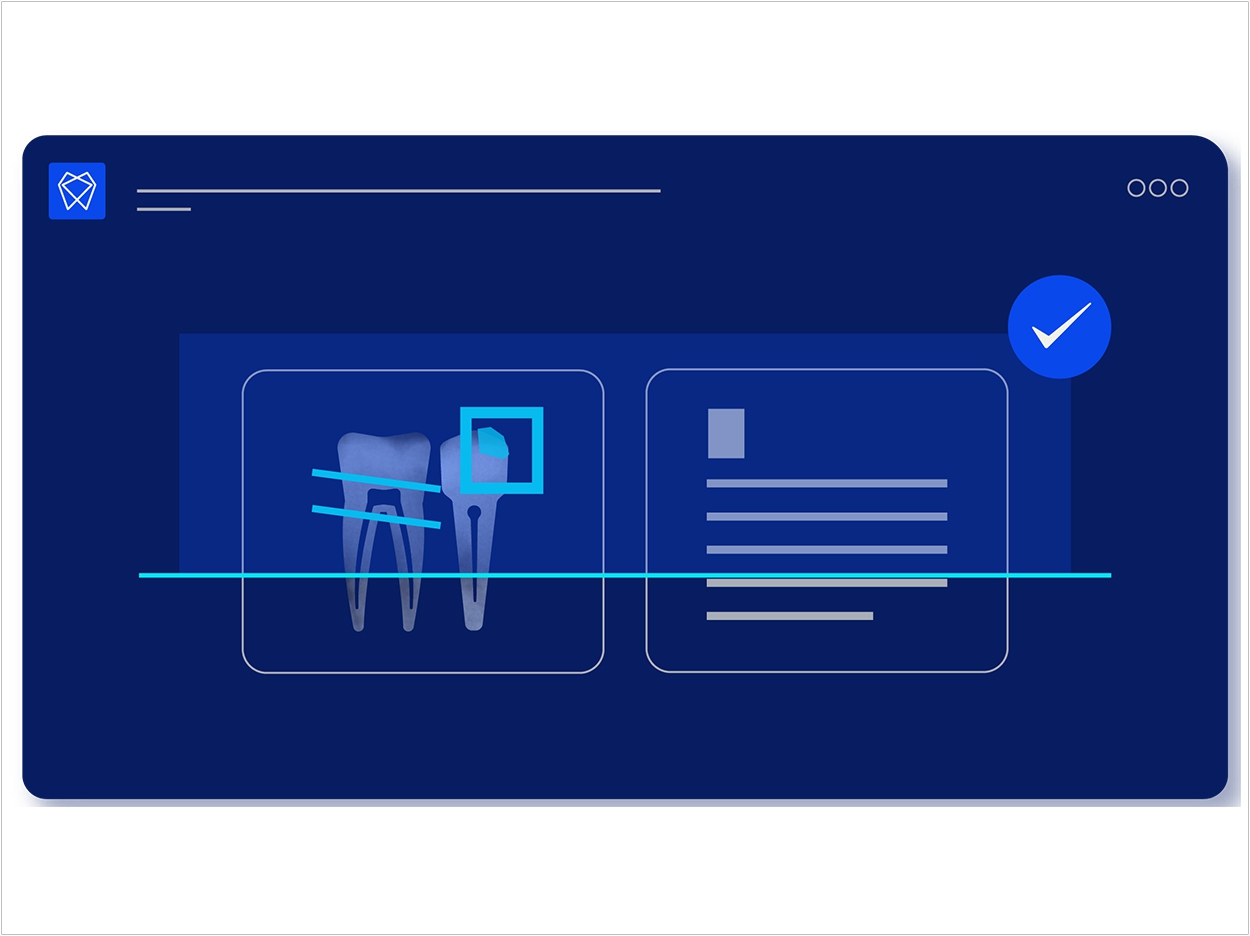
One of the most fascinating features of artificial intelligence (AI) is its ability to adapt to our needs over time. After all, time produces data, and data, when combined with evolving algorithms, leads to adaptive solutions.
AI is currently demonstrating incredible potential in dental diagnostic support, with machine learning (ML), deep learning (DL), and computer vision offering an invaluable second opinion to dentists—and technology-backed insights to patients.
But AI is also beginning to permeate into the domain of the dental business workflow, where organizations can map clinical intelligence on top of business intelligence to create a clear and actionable picture of their operating timelines, with automated charting, administrative tasks, and diagnosis right around the corner.
What’s Next
But, like with any advanced technology, there’s always something even bigger on the horizon. For those working in the medical AI field, creating algorithms that lead to liability-free diagnostics is an essential part of futuristic, hyper-intelligent treatment plans.
To reach that heightened level of quality assurance, AI programs will need to align input data with pattern recognition that offers insight into something entirely different—the future.
Research and development is currently underway in AI predictive analytics capable of utilizing ML, DL, and computer vision to create future-based diagnoses of pathologies and conditions. Whereas medicine currently relies on professional “guesstimates” to determine future outcomes, there is no technological basis on which we can, with certainty and accuracy, build those prognoses.
But what if, as a dentist, you could run an image of your patient’s teeth and gums through an AI program and know with near-certainty that in precisely six months, their tooth decay will become untreatable and require a crown?
And while a human dentist may be able to perform a similar parlor trick, AI will hardly be guessing. Instead, it will be using millions of data points to make a highly informed, educated, and quantified projection down to a fraction of a percentile.
Predictive diagnostics will also serve as grounds for insurance claim authorization, aiding in preventive care that keeps patients healthy instead of simply treating the disease. With networked AI among clinics and insurers, pre-authorization may even occur in real time, and patients can enjoy same-day diagnosis, authorization, and treatment. A combination of predictive diagnostics, insurance fraud detection, and automated underwriting may involve the simple tap of a button and an immediate response.
AI will also open the door to unified treatment options among multiline carriers and integration of medical data across various healthcare fields. As data-driven treatment becomes more commonplace, medical disciplines will inevitably begin to overlap until dental and healthcare integration is complete.
The Roadblocks
When diagnostics and treatment are isolated to a single branch of medicine, complications can occur, or, at the very least, a patient may not get the treatment that’s best for them. In dental care, one of the biggest roadblocks to efficiency and quality assurance is simply not having enough information about the patient. Not only can this slow down the claims process, but it also can keep dentists from doing their job to the best of their ability.
AI is posed to overcome such hurdles by simply integrating all available data into its algorithmic program and providing output specific to the medical field and request. This will play a major role in offsetting liability and in protecting dentists, patients, and insurers as well.
As AI advances, it may result in an overall better healthcare experience by way of readily accessible, intelligible, and actionable data. This will undoubtedly lead to a reduction in downstream medical costs as technology-based diagnostics and treatment plans spur upfront payments minus delay, inefficiency, and human error such as over-diagnosis, under-diagnosis, and misdiagnosis.
AI will also give clout to research being conducted on the connection between periodontal diseases and common illnesses such as diabetes and hypertension. With medical and dental integration, dentistry will enjoy newfound support in healthcare and much needed standardization of care that enhances clinical capabilities and simply lets dentists do their job.
Mr. Hillen is the founder and CEO of VideaHealth, an MIT spinout and leading dental-AI company working with leading DSOs, insurers, and other companies in the dental industry. Previously, he conducted research at the intersection of engineering and social science at MIT’s Institute for Data, Systems and Society and at Harvard Business School. He also worked for McKinsey & Company and founded Ninu, a digital healthtech startup. He holds two master’s degrees from MIT in computer science and technology policy and a bachelor’s in management and technology. He completed the first German State exam in medicine as well. This article is the product of a discussion between Mr. Hillen and Dr. Paul Feuerstein, editor in chief of Dentistry Today. He can be reached at florian@videa.ai.
Related Articles
How Will AI Affect Dental Insurers?
How Will Artificial Intelligence Affect Dentists?
AI and Dentistry: Envisioning the Dental Clinics of the Future—And Today












